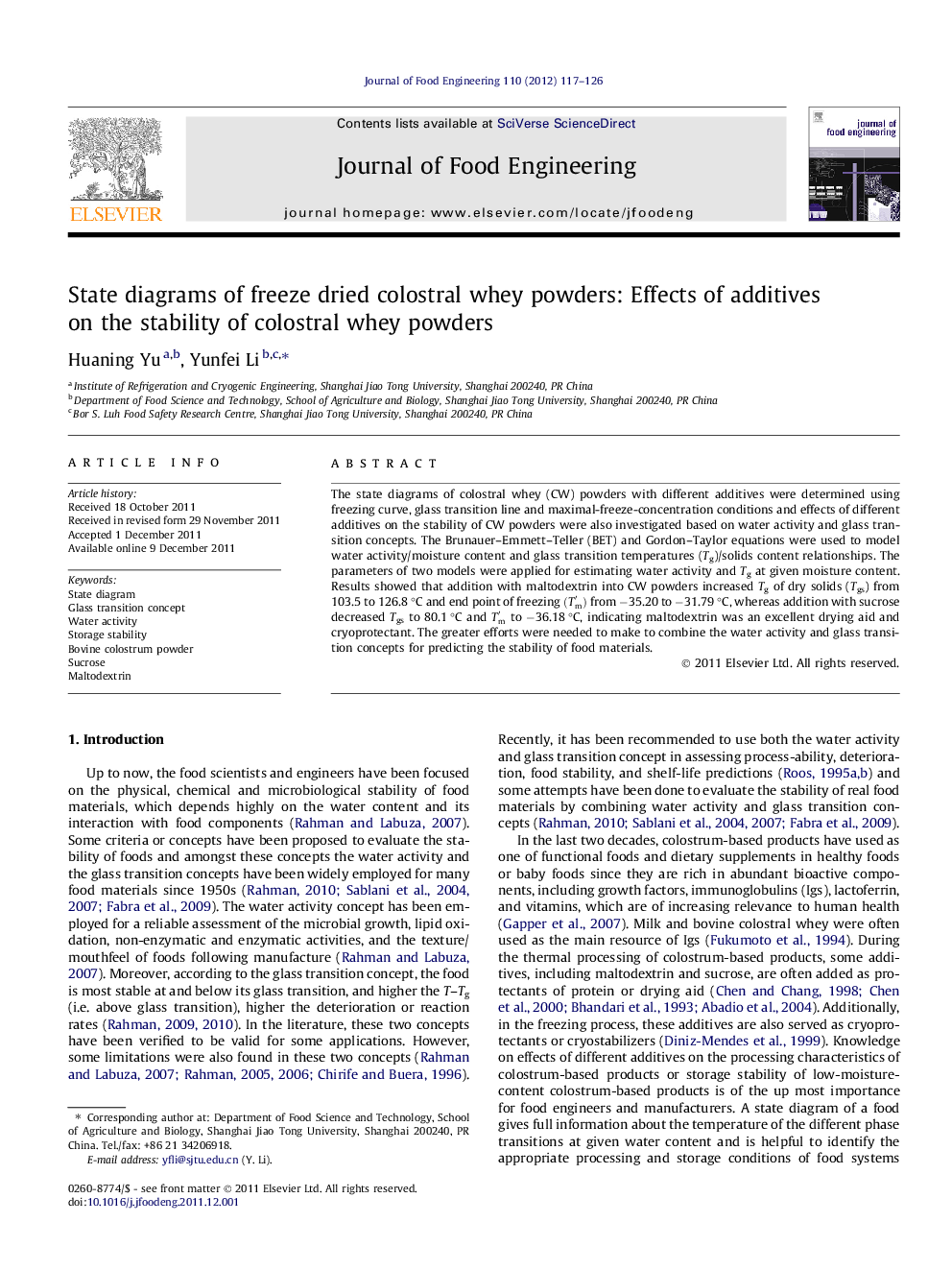| Article ID | Journal | Published Year | Pages | File Type |
|---|---|---|---|---|
| 223827 | Journal of Food Engineering | 2012 | 10 Pages |
The state diagrams of colostral whey (CW) powders with different additives were determined using freezing curve, glass transition line and maximal-freeze-concentration conditions and effects of different additives on the stability of CW powders were also investigated based on water activity and glass transition concepts. The Brunauer–Emmett–Teller (BET) and Gordon–Taylor equations were used to model water activity/moisture content and glass transition temperatures (Tg)/solids content relationships. The parameters of two models were applied for estimating water activity and Tg at given moisture content. Results showed that addition with maltodextrin into CW powders increased Tg of dry solids (Tgs) from 103.5 to 126.8 °C and end point of freezing (Tm′) from −35.20 to −31.79 °C, whereas addition with sucrose decreased Tgs to 80.1 °C and Tm′ to −36.18 °C, indicating maltodextrin was an excellent drying aid and cryoprotectant. The greater efforts were needed to make to combine the water activity and glass transition concepts for predicting the stability of food materials.
► State diagrams of colostral whey powders with different additives were constructed. ► The BET equation was used to model water activity/moisture content relationship. ► The Gordon–Taylor equation was used to model Tg/solids content relationship. ► Maltodextrin was an excellent drying aid and cryoprotectant. ► There was still a gap between the water activity and glass transition concepts.
